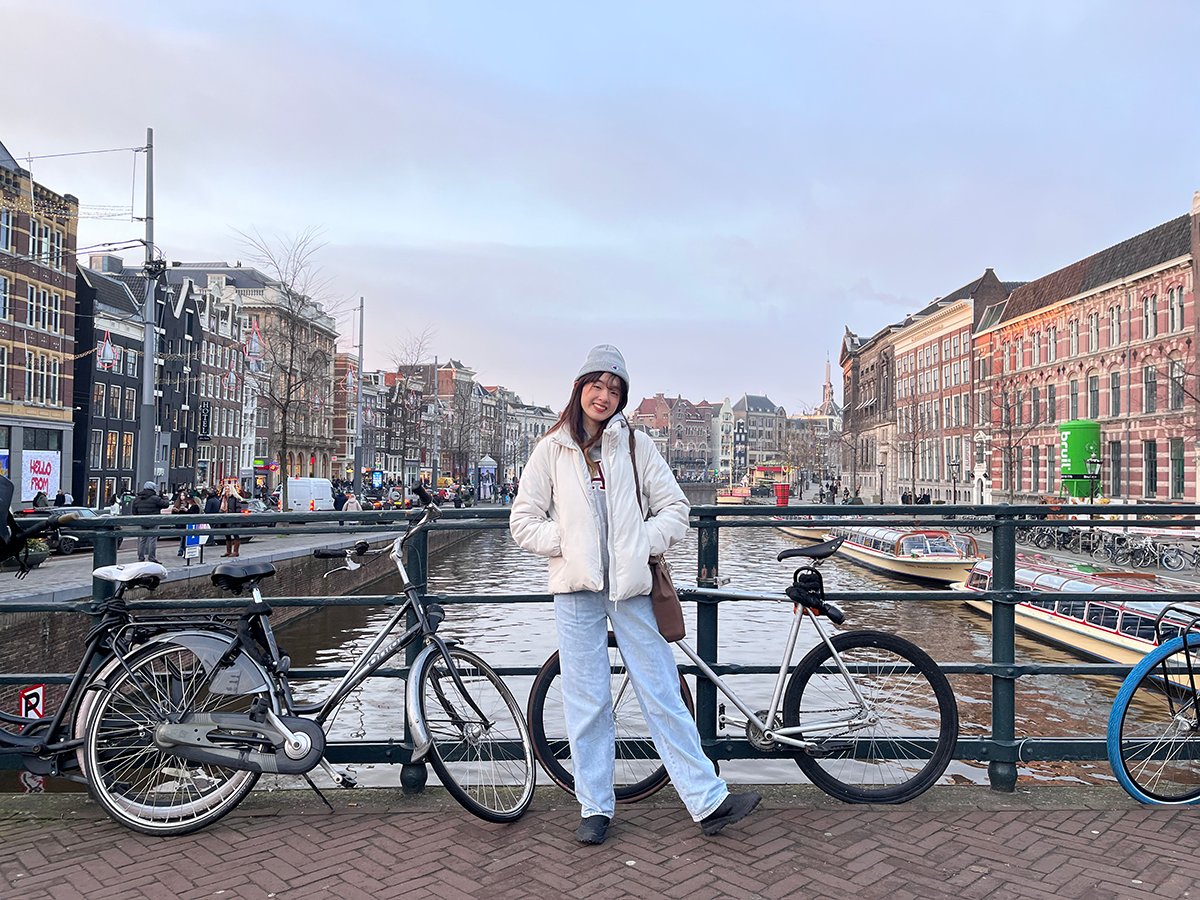Fiona Yeung
Amsterdam is the capital city of the Netherlands, and has a long and fascinating history. It is renowned for its stunning canals, narrow streets, and historic buildings. Known as the "Venice of the North", Amsterdam has various canals and bridges that crisscross the city. Living in this cosy and beautiful city offers the perfect opportunity to enjoy a slow-paced life and experience fascinating local culture. However, as a newcomer, there are some “unwritten rules” that you need to know, which will help your new life in the Netherlands become smoother and easier.
1. Discover the city by public transport
Amsterdam has an extensive and reliable public transport system that can help you travel not only in the city centre, but also to different parts of the Netherlands. The most common and convenient options are the tram and metro, and you can utilize the "9292" app to check relevant information regarding time and route. Since strikes are frequent in Europe, it is important to be aware of the strike days for both the NS train company and GVB (for tram and bus services). This information can be easily found in the "9292" app.
Upon arrival at the airport, head to the NS service counter to purchase an OV-chipkaart, which is a card that can be used to access all public transport by topping it up. The most efficient way to reach the city centre is by train. You can download the "NS" app to check train schedules and plan your route with ease.
2. To bike or not to bike: that is the question
Amsterdam is one of the most bicycle-friendly cities in the world, with a network of over 800 kilometres of cycling paths. These paths are separate from car traffic and often have their own traffic lights, making cycling a safe and efficient way to get around the city. As a result, cycling has become the most popular way for local people to commute to work. Due to the high convenience of cycling, the city actually has more bicycles than people. You can find bicycle storage spots everywhere, and more uniquely, there is a newly opened underwater bike garage at the heart of Amsterdam (very near to the Central Station).
You can also find free parking at your school. These underground bike garages are usually chargeable parking, but you can also park your bike in certain spots on the street. However, you need to be cautious of the possibility of your bike being stolen. In the Netherlands, bicycle theft is very common, so make sure you have two locks on your bicycle.
After talking about the benefits of cycling in the Netherlands, I imagine you would now like to buy a bicycle and start your cycling journey here. Hold on! You will first need to become a skilful bike commuter. Although Dutch people walk much slower than people in Hong Kong, when they get on their bikes, they all become excellent cyclists. If you are a cycling beginner like me, it can be very dangerous to bike on the road. Many skilled locals on bicycles will pass by you quickly. If you cannot control your bike well, an accident is bound to happen. At the same time, as most Dutch people tend to be very tall, their bikes are much bigger than the ones we have in Hong Kong, making it harder for girls to handle. Since locals bike very fast, if Google Maps suggests you bike for 10 minutes to a destination, you may need to double or triple the time.
If you are still convinced that you want to use a bicycle as your means of transportation in Amsterdam, here are some useful tips to get a bicycle. Buying a second-hand bicycle may cost around €70, and you can get it from Waterlooplein flea market. However, for short-stay exchange students, renting a bicycle will be a better choice. Some popular bike rental companies are Rent-a-Bike, Amsterdam Bike Rent, and Swapfiets. You can rent a bike easily from these shops, and if you have any problems with your bike, they will also repair it for you free of charge. If you do not want to rent it monthly, you can use OV-fiets, which allows you to rent a bike hourly.
3. It is hard to be a fashion star
Amsterdam's weather can be unpredictable, and at times, challenging. While summer is typically the warmest and driest season, rain showers and thunderstorms can still occur. Winter, on the other hand, can be windy with temperatures dropping below freezing and occasional snowfall, making it difficult to be fashionable. Dresses and shoes may pose unnecessary challenges for daily travel, and carefully crafted hair may be ruined by strong wind. Therefore, functional windproof and waterproof jackets, hats that are resistant to wind, and waterproof, non-slip boots are recommended for comfortable living in Amsterdam during wintertime. Additionally, during winter, gloves are advised to prevent frostbite.
Conversely, summertime in Amsterdam can be sunny and warm, making sunglasses essential for enjoying the sunshine. It is also worth noting that air conditioning is uncommon in Amsterdam, and most student accommodations do not provide it. Therefore, tank tops and shorts are suitable clothing options during summer to beat the heat.
4. Be a savvy consumer!
In Amsterdam, you can find almost anything you need or want, including some Hong Kong food that you may miss during your stay. However, finding the cheapest prices is essential.
Albert Heijn and Jumbo are the most popular chain supermarkets in the Netherlands, offering a wide range of food and daily necessities. By obtaining a bonus card for free, you can get extra discounts as well. In addition to these local supermarkets, German supermarkets like Lidl and Aldi can also be found in Amsterdam. These supermarkets offer lower prices than Albert Heijn and Jumbo, but the variety of brands is limited. ACTION is a great place to purchase daily necessities such as tableware and personal care items. The same item can be bought at a lower price there. Always remember to bring your own shopping bags when grocery shopping as plastic bags will cost extra.
Regarding transportation, unfortunately, there are not any discounts available for international students. However, if you frequently use public transport, you can consider purchasing a monthly subscription plan, which offers a discount of up to 40% depending on the plan you choose. Generally, the daily transport cost in Amsterdam is more expensive than the monthly price, so buying the subscription plan is a better option if you use public transport frequently.
5. Cashless society
Amsterdam is considered a well-developed cashless society. Most shops accept debit or credit cards, although it is recommended to carry some cash with you as well. Some restaurants and supermarkets like Albert Heijn only accept Maestro cards, which is a European debit card. In such scenarios, cash is the only option for payment. It is possible for international students to open a Dutch bank account in the Netherlands, but be aware of international transaction fees when transferring money from your Hong Kong bank account. You can only open a bank account after completing registration and receiving your Citizen Service Number (BSN) from the government. ING Bank, Revolut, and ABN AMRO Bank are some of the well-known banks in the Netherlands that international students can consider using.




